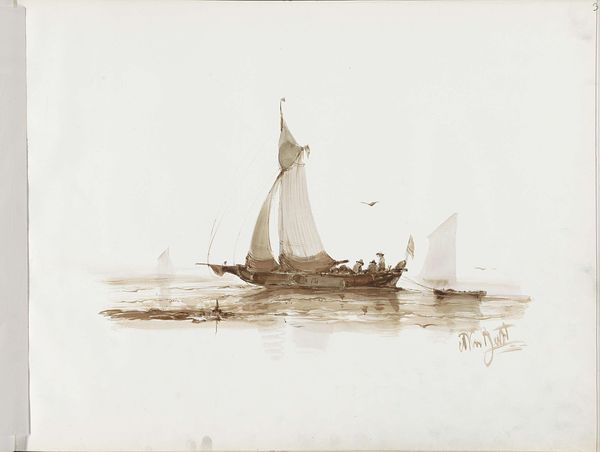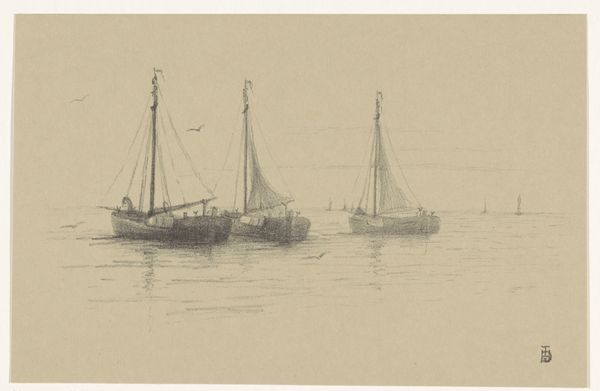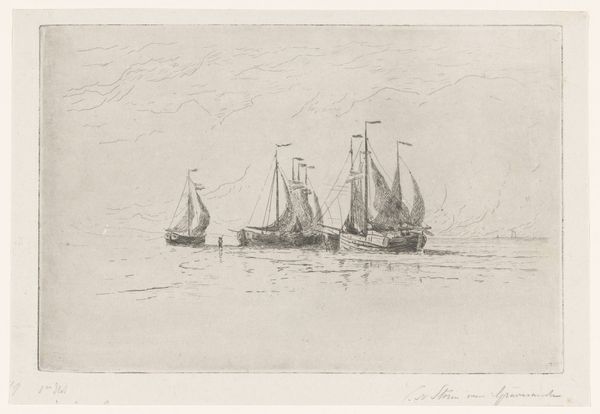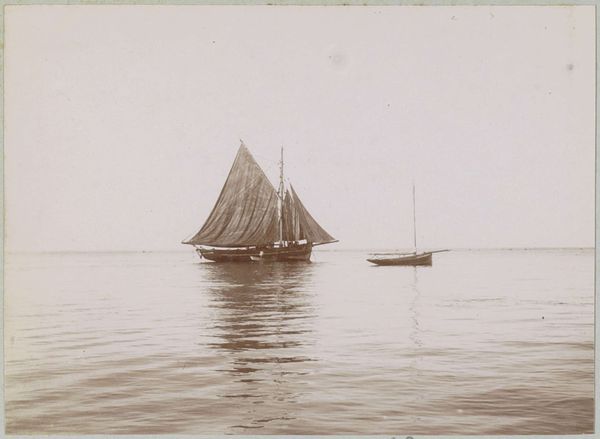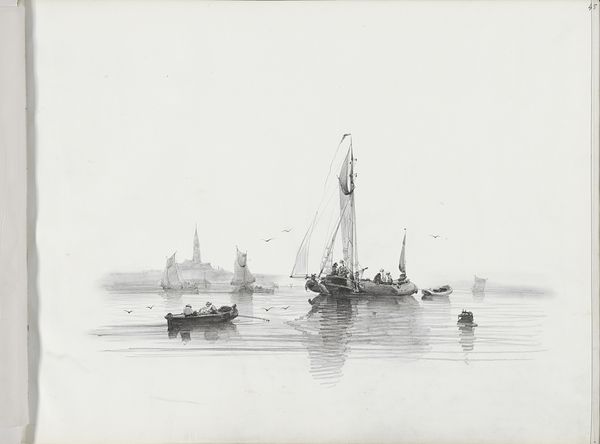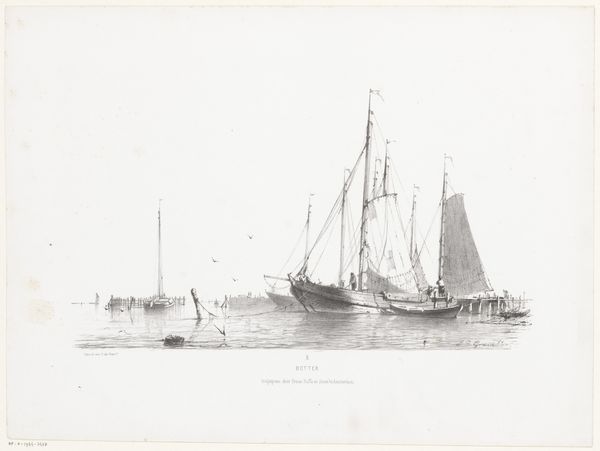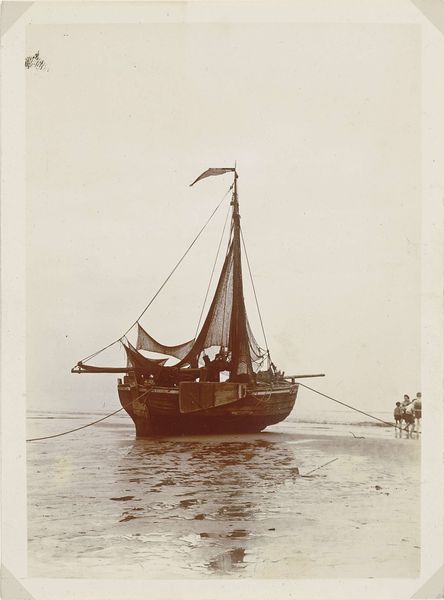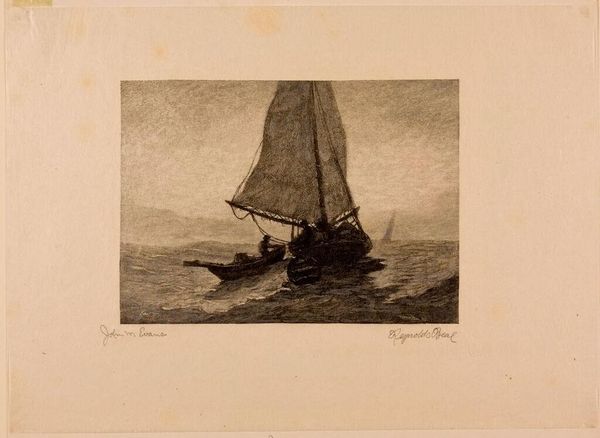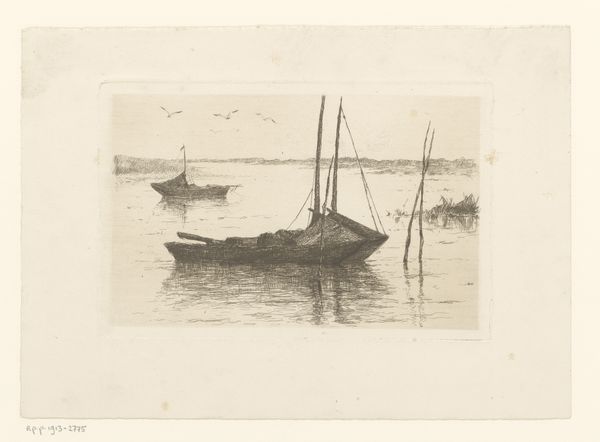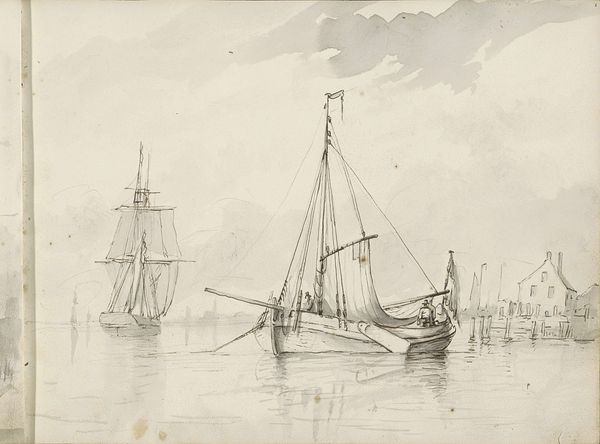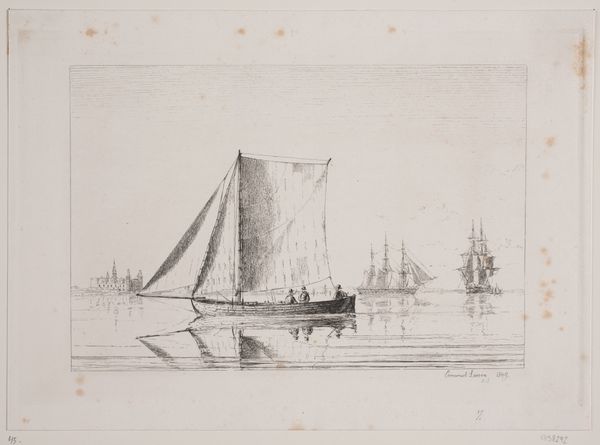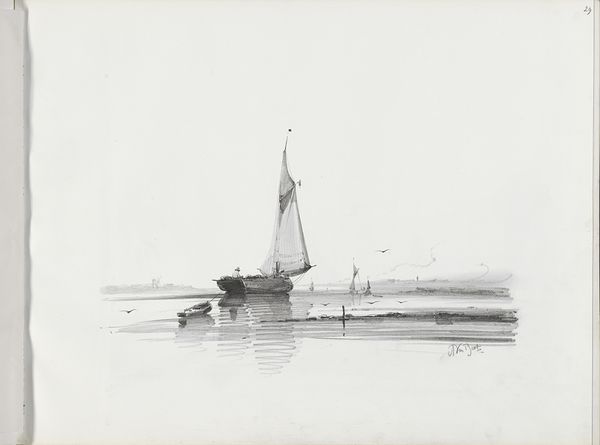
print, etching
# print
#
etching
#
landscape
#
geometric
#
line
#
cityscape
#
realism
Dimensions: plate: 17.3 × 24.92 cm (6 13/16 × 9 13/16 in.) sheet: 26.04 × 34.29 cm (10 1/4 × 13 1/2 in.)
Copyright: National Gallery of Art: CC0 1.0
Editor: Here we have George Canning Wales' etching from 1929, “Coming out of Marblehead.” The detail is striking—look at how the ship mirrors in the water! It feels calm, serene, almost like a memory. What captures your imagination when you look at this piece? Curator: It's a quiet power, isn't it? Like the feeling of standing on the shore, the salt air, the cries of gulls—all held in a single breath. For me, it's that dance between realism and something almost ethereal. See how he uses those delicate lines, particularly in the reflection? It suggests a deeper reality, not just what's on the surface. What does it say to you about this time in America? Do you find anything missing, maybe, something you yearn for that the artist leaves out? Editor: I feel the nostalgia for this early American sailing life, though I don't know if it really existed! What’s particularly interesting is the emptiness. The scene seems almost post-apocalyptic because, other than the sailboat, the composition is quite stark, simple and clear. It’s dream-like, I guess? Curator: "Dream-like," I love that. Perhaps it *is* a yearning. Wales wasn’t just documenting a scene; he was curating a feeling. A longing for a simpler time, perhaps, or a reflection on the transient nature of things. What stays with you when you look away? What echo does it leave in your mind? Editor: Definitely a sense of peace. The geometry juxtaposed with the freedom of the open sea – it's a powerful combination. Thanks, that really opened up my eyes to appreciating the subtlety! Curator: And you've sharpened my appreciation for that delicate balance – a picture about stillness also brimming with potential movement. Beautiful, really.
Comments
No comments
Be the first to comment and join the conversation on the ultimate creative platform.
